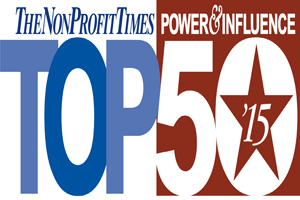Years from now you might find that Kony 2012 T-shirt in your laundry basket hanging in a vintage shop or see it in a VH1 special called I Love the 2010s. But right now, donations and sales from the phenomenon fueled the growth of the fledgling nonprofit behind the film that took the Internet by storm last spring.
The numbers behind the Kony 2012 campaign are staggering, particularly for a charity that rarely exceeded $10 million in annual revenue in its seven-year history. Invisible Children, dedicated to stopping child abductions and slavery in east Africa, created one of the most widely viewed videos on the planet last year. It garnered almost 100 million views.
“What happened to us was pretty unique in the charity landscape, 100 million people watched our video in six days,” said Ben Keesey, chief executive officer of the San Diego, Calif.-based nonprofit.
The campaign to make Ugandan warlord Joseph Kony and his Lord’s Resistance Army (LRA) a household name was launched on March 5, with a goal of 1 million views by the end of 2012. “For a yearlong campaign, the first six hours we were blown away,” said Chris Carver, chief operating officer. “People expected the yearlong campaign would unfold in three days. The expectations got way ahead of what was realistic,” he said.
An original goal of 500,000 people signed on to the pledge was annihilated, with more than 3.7 million pledges. More than 400,000 people bought one of the Kony awareness products, such as action kits, which initially were being sold online for $30. Invisible Children sold or distributed 285,000 action kits, 895,000 bracelets, 340,000 T-shirts and 4.6 million posters during the campaign.
All those action kits and other products generated enormous revenue for the charity. According to its federal Form 990 for the Fiscal Year Ending June 2011, Invisible Children’s gross sales were more than $20 million, with costs of almost $5.5 million. In all, the charity tallied almost $15 million in other revenue as a result of the campaign. Total revenue was almost $33 million, compared with net income of about $10 million the previous year.
The initial inventory of action kits was 12,500, said Keesey, whose original goal was to get 500,000 views of the video by the end of the campaign, in December. That goal was reached within hours.
“It took us four weeks to get 98 percent of those orders out the door, all over the world, to virtually every country in the world. In a world of Amazon and Zappos, folks who didn’t get action kits for three weeks were disappointed,” said Keesey. “It was an incredible logistical challenge, not only to fulfill but source. We bought virtually every red T-shirt available in North America,” he said.
“When you think about it, the managerial question we had was, we started to look at what lead times would be. Sales were still going very strong. We had our store up for about three days but we turned it off, not because we thought we couldn’t deliver but we thought we wouldn’t be able to deliver in a justifiable period of time,” said Carver. “We could’ve left it on and probably could’ve made several more million dollars,” he said. Eventually, Invisible Children turned off the online store, instead putting up a free download where people could make their own T-shirts. Kony 2012 created an “incredible wave of momentum” that translated into more defections from the LRA in three months than the previous six years, as well as the launch of the African Union initiative, UN strategies, as well as European support, said Keesey. There were 300,000 people registered to get advance materials to the Cover The Night event on April 20. He said that he was disappointed in the media coverage of that event. “The media wanted to see one huge culminating event, like in Times Square with 1 million people. This happened in communities in every tiny area in the world. It was meant to be that — very diffuse, low to the ground,” he said.
The nonprofit organized a rally in Washington, D.C., this past November and packed 12,000 people into the Walter E. Washington Convention Center with eight world leaders on the stage, Keesey said.
The Kony campaign “tested all our systems, all our capacity. Obviously we’ve grown as a result of that,” he said, with the organization expanding from about 40 paid staff to 60. One of the areas the charity wants to invest in is ways to engage its new constituency. Until Kony 2012, engagement was mostly face-to-face — essentially full-time volunteer interns traveling by vans doing free screenings of the film at high schools and colleges across the nation, said Carver. Clubs sprung up during the past seven years at colleges and high schools without ever being in touch with them other than through a Facebook page, he said.
“Of all the challenges this year, the pressures and stresses of having the resources to be able to fund the work we want to do in the next two years is incredible,” said Keesey. He expects to fully implement the money raised during the next 12 to 24 months.
The early part of 2013 is a critical window, said Keesey, because it’s the dry season in the LRA area. Invisible Children can capitalize on that, continuing a mobilization campaign with flier drops as well as cross-border conferences with elected officials and other key figures. It will also heavily invest in protection and communication on the ground. There will be less focus on social media buzz and viral movies and more time and resources put into a strategic way to end the conflict, said Keesey.
“If we’re shooting for a permanent end to the conflict, to ensure it doesn’t happen again, it’s an extremely expensive endeavor,” said Carver, adding that they have “nowhere near the financial resources it’s going to take,” but also includes investment and support from governments in the region. Almost more important than money to any nonprofit is its database of donors or advocates, to reach out to for solicitations or other actions. The Kony 2012 campaign grew Invisible Children’s email list tenfold, by 3.7 million addresses, according to Carver, while the number of fans on Invisible Children’s Facebook page soared from 450,000 to 3.2 million.
“What we’re still trying to weed through is the different levels of engaged customers or constituents,” said Carver. “We’re trying to figure out where to spend most of our time. Initially, people were taken aback by the video, some dropped off, others continued to be more engaged. Working those numbers is a task for the data team but numbers have increased quite drastically,” he said.
It’s the classic challenge of engaging with a new audience: do it in a compelling way that grabs attention (in their case, a 30-minute film), and then determine how to take them to a deeper story, according to Keesey, and how to engage their commitment in the long term.
Lessons Learned
For all the attention and added revenues, Invisible Children was not without criticism for the Kony campaign. There were some who said the charity simplified a very complex situation in Africa to meet their needs, questioning the historical accuracy of parts of the film, as well as program and filming expenses, among other things.
Carver conceded Invisible Children had a hard time communicating what makes it unique, prompting questions about the charity and how it spends money. Filmmaking is only one part of what the charity does — having made 11 films and other campaigns about the LRA conflict. Invisible Children has four primary program areas: medic, mobilization, protection and recovery programs.
For a small grassroots organization that gets thrust into spotlight, Keesey emphasized having total clarity and preparing materials about all elements of a mission. “It took us a couple of days, and the news cycle is so short these days, to put out in thorough detail all elements of our strategy,” he said.
It was media mobilization, protection, recovery, all around one issue. “It took us 48 hours to articulate in a way that would clearly articulate structure,” said Keesey, but required more “upfront work in clear, mission-oriented materials.
“If you’re going to try to make someone famous…have a plan that you’re going to succeed. Bet on yourself so to speak. We launched this enormous campaign, believing but not planning on it to work,” said Keesey. “When Kony hits Time, we’re shocked but we’re not prepared. I wish we’d done a little more believing,” he said.
“It’s hard, as a smaller organization – whether for-profit or nonprofit – to invest time and resources into some of those things,” said Carver. One of the criticisms of Invisible Children that really stuck the most, said Keesey, was questioning of their humility in survivors and those on the ground in affected nations. In these road tours at schools around the nation, after the Kony movie ends, the first person who walks on stage is an LRA survivor who asks participants to join them in remaking their community. “We didn’t have a way to translate into an online model, which was missing that component. It made people question whether we had deep relationships with the community, whether we were really tied in with local community leaders,” said Keesey. NPT












